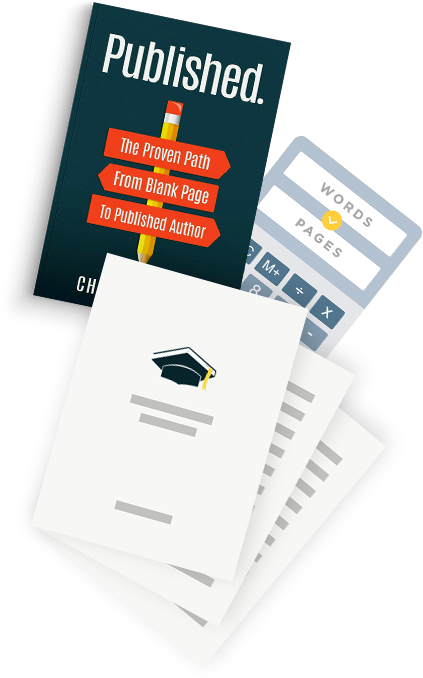Ever felt as if the sun was smiling down upon you on a beautiful occasion, or perhaps the clouds were weeping with you during a difficult day you were experiencing? This is what we call the world of pathetic fallacy.
It is when nature, inanimate objects, or even animals mirror how you’re feeling on the inside – as if the world is understanding our moments of happiness and sadness.
Coined by John Ruskin in the 19th century, writers often use pathetic fallacy to add depth to their character’s state of mind and create an entire atmosphere within a scene.
Let’s uncover how we, as writers, can truly make use of this literary device (and which mistakes we should be avoiding, too!).
This article on pathetic fallacy covers:
What is pathetic fallacy?
It is a phrase that a writer uses to add emphasis and impact to an inanimate object, animal, or natural element.
The device is used to give human feelings to things in our environment to portray a specific emotion or mood. Of course, these things can’t literally happen, like the sun smiling down on you, hence the word ‘fallacy’ which refers to falseness or lack of reasoning.
Pathetic fallacy vs personification: what’s the difference?
These two literary devices are often confused with one another because of how closely they are linked but there’s a key difference between them.
Personification refers to inanimate objects being given human actions, for example, “the story jumped off the page.”
It’s referring to human actions only as, of course, a story can’t jump!
Pathetic fallacy, on the other hand, is applying human emotions to an inanimate object, like the weather. For example, the angry thunder. Its purpose here is to reflect an emotion and set the mood, rather than describing actions.
Examples of pathetic fallacy
Some of the greatest literature around us have utilized pathetic fallacy to portray a characters’ emotional state of mind, here are some examples:
- Frankenstein
Mary Shelly is an avid user of pathetic fallacy when it comes to creating a dark, gothic atmosphere.
When Elizabeth dies on her wedding night, the wind is described to have risen “with great violence.”
- Macbeth
When King Duncan was murdered, the atmosphere fell into shock and Shakespeare narrated, “the Earth was feverous and did shake.”
- Great Expectations
Charles Dickens frequently used pathetic fallacy in his work when characterizing nature. He spoke of the “violent blasts of rain” which had accompanied these “rages of wind.”
- Wuthering Heights
As protagonist Cathy’s lover left her house, the weather turned into a “violent thunderstorm” as a reflection of her deep sadness of his departure.
- The Great Gatsby
As Gatsby and Daisy slowly fall back in love again after their reunion, Fitzgerald describes the “twinkle bells of sunshine” as they become giddy with one another. Pathetic fallacy is heavily used in this novel in relation to the weather to depict the mood.
- The Raven
Edgar Allen Poe famously narrated the poem, The Raven, which highlights themes of grief, loss, and heartbreak. As his feelings of sadness grow, he writes about the “sad, uncertain rustling of each purple curtain.”
- Romeo and Juliet
Of course, it would be hard to talk about pathetic fallacy without mentioning the famous words narrated in Romeo and Juliet of the “envious moon” and its feelings toward Juliet. A moon, feeling envious?!
- The Wasteland
T.S Elliot attributes human emotion to inanimate objects when he portrays the month of April as being the “cruelest month that mixes dull roots with spring rain.”
- Charlotte Bronte
In Jane Eyre, the characters’ emotions are heightened by the storm that breaks out when Jane realizes the deception by Rochester, reflecting her inner turmoil.
How to use pathetic fallacy
Here’s a guide on how you, as a writer, can effectively implement pathetic fallacy into your work:
- Identify the emotion: Think about which it is that you want to convey through an inanimate object and how the environment can enhance what your character is going through.
- Choose your element: Which element of nature will you use to symbolically match the emotion of your character? Perhaps the rain can weep as your protagonist does, or the clouds fall into a rage as your character’s anger grows.
- Use weather wisely: The weather is an ideal way of using pathetic fallacy because it is the largest element of our atmosphere and this greatness has a bigger impact on the reader.
- Combine elements: Rarely you’ll find writers mixing two elements together, like T.S Elliot’s description of April being like dull roots mixed with spring rain. It’s highly effective and a great way to separate you from all the other uses of pathetic fallacy out there in the world of literature.
- Connect with character development: Use the environment to provide insight into a character’s internal state. For example, your protagonist seeing the sun shining down could symbolize them learning to accept a new situation after a dark period of time.
- Avoid overuse: While it’s a powerful tool, relying too heavily on pathetic fallacy can make your writing seem melodramatic.
Pathetic fallacy: summary
Employing pathetic fallacy can elevate your writing by adding an extra layer of emotional depth and atmospheric richness.
By thoughtfully integrating natural elements to mirror characters’ feelings and moods, you can enhance both character development and thematic exploration in your narrative.
Always remember, the key is subtlety and balance, so as not to overshadow the primary narrative with overly dramatic environmental cues.



